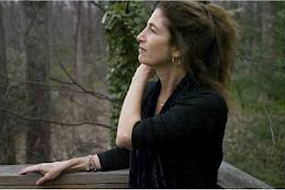An interview with Tara Brach
 Matt Ahrens: Thank you for taking the time to do this interview.
Matt Ahrens: Thank you for taking the time to do this interview.
Tara Brach: You’re welcome.
MA: For many of our members, this may be their first chance to get to know you. You are a Dharma teacher. Editor’s Note: “Dharma” means the teachings of the Buddha. How did you get interested in the Dharma in the first place? Where did it start for you?
TB: I started practicing Kundalini Yoga while I was in college; it’s a very rigorous kind of yoga and I got a kind of high off of it. Between that, experiences in nature, and other altered states, something in me realized that there was a whole world beyond the reality in which I normally lived. That sense of this greater reality was part of what turned me toward spiritual practice and another part was what I now call “The Trance of Unworthiness.” I was always trying to perfect myself and I looked at yoga and meditation as a way to become more perfect. I was trying to get away from a flawed self and MOVE towards wholeness, being-ness, and something sacred. From very early on I could detect both the greater reality and the trance in which I found myself.
MA: Where were you during this time, geographically?
TB: I was in New England at the time. I started doing yoga and more concentrated mantra meditations while still in college. I joined an ashram as soon as I graduated. I stayed in an ashram community for about ten years, first in Massachusetts and then I moved to another community in the Washington, DC area. The whole time I was in the ashram I wore a turban and all white garb. It was quite rigorous. We’d get up at 3:30 in the morning and spend two and a half hours in yoga, meditation, chanting and prayer, and we’d work in family businesses. It was a whole life style.
Simultaneously during those two years before graduation and joining the ashram, I was very much a social activist so my life was going to tilt towards either going fully into politics and activism or towards the ashram and I landed up in the ashram.
MA: It’s interesting, the choice between spiritual life and political life. It reminds me of the book Kim by Rudyard Kipling. Have you ever read that book?
TB: No. Say more.
MA: It’s a book Mark Twain supposedly read every year after it was published later in his life. Kim is an orphan in India in the late 19th century who is cared for by a Tibetan Lama who sends him to an English school. Kim also has connections with the secret service and is trained in espionage. It’s a book about the dilemma of which path to take, spiritual or secular. It’s great.
TB: What is my destiny? Who am I really? Can I choose how to be that? That’s well put. I had the influence of my father and the social activism of my parents. It was very much in my blood, the idealism of it. I also sensed consciousness as a place of activism. It was whether I was going to go for the inner or the outer and at that point in my life it was more of a split. It is no longer a split. It might have seemed that way then.
MA: How did you make the transition from the ashram life to your current focus?
TB: I think I found the ashram and the particular teacher and group I was in as too rigid. It was particularly male and hierarchical. I wasn’t allowed to participate in certain activist projects that I wanted to. I found it restrictive. I also had started to read some of the classics from the Buddhist teachers like Zen Mind, Beginner’s Mind by Shunryu Suzuki and Chogyam Trunpa books and so on. So I decided I was going to try out a Buddhist retreat. Really, probably on the second day, on some level, I realized for myself that this could carry me the whole way.
It wasn’t the Buddhist, religious part because I don’t think of myself as, “Oh, I am a
Buddhist.” I more think of it as, the Buddhist have an amazingly articulate way of
teaching meditation. The meditations themselves are pretty universal but the Buddhist
teachers are very articulate in describing the pathway of meditation. That’s what drew
me.
And, I find the perennial teachings are beautifully presented through the Buddhist stories.
The Buddhist psychology, with its lists and formulations, has a great lucidity and depth to
it. So, I’m attracted to that but my interest is not affiliation with one religion versus
another. I really see the direction we are going as not to have a deep identification with any particular religion. This is really the hope of human evolution, realizing who we are
beyond any separate identity.
MA: I think it was Suzuki Roshi who said, “Non-Buddhists believe there are Buddhists
and non-Buddhists. Buddhists believe there are only Buddhists.”
TB: Hahaha. That’s great, I like it. It reminds me of a story. A teacher was advising a
young woman who was very inspired after a meditation retreat. She wanted to go home
and tell all of her friends and her parents about it. He suggested that instead she go home
and clean their basement. “Don’t try to be a Buddhist, “ He said. “Try to be a Buddha.”
That’s more the idea.
MA: Was your first retreat at IMS? Editor’s Note: The Insight Meditation Society in
Barre, MA, founded by Joseph Goldstien, Jack Kornfield, and Sharon Salzberg in 1976.
TB: Yes, I went up to IMS and Joseph GoldsteIn was the leader of that retreat. I had
spent ten years learning a more concentrated form of meditation, which I actually really
liked. I have an affinity towards this; I am able to concentrate my mind. So, over the
years I’ve had all sorts of very wonderful experiences of Samadhi, of collectedness,
feeling unified, peaceful, and so on. But what I didn’t learn was how to just open my
attention and really be with life as it is in the moment. In other words, my whole training
for those first ten years was on how to direct my mind, how to concentrate my mind, how
to focus my mind. So when I turned to the Buddhist training, In addition to a certain
amount of concentration, I was really turning to a training of heart-mind that had much
more to do with presence — with learning to open our being to the life that is right here.
MA: That’s lovely.
TB: As I teacher, I find, that most of us combine those two facets of training. We need a
certain amount of focusing in order to quiet the mind to be present. But if we don’t just
let go and be, we’re still “doing” and there is no freedom.
MA: It seems that sometimes when our minds are overwhelmed by a sensation, it seems
to be almost too much to be fully present to it. We may be dealing with anxiety or grief or
something and the more we open to it, the more overwhelmed we get by it and it takes us
away from the present moment. I could see how it may be helpful to focus your mind first
in order to build some strength and capacity in order to then open up to the other
experience.
TB: That’s exactly right. It’s a wise use of directing the mind so you can have the
resilience and resourcefulness to be fully with what is.
MA: So then you had this introduction to Buddhist practice at your first retreat, how did
you go from that to being a teacher?
TB: Well, I had already been teaching classes in yoga and concentrative practice while in the ashram and I had kind of a following, if you want to put it that way. So, to be honest,
I didn’t realize then that there was any hubris in it. After the retreat I went back to my
groups and I said, “Okay guys, now we’re going to do Buddhist meditation.” I just started
teaching it. The groups were built up; we had 30 or 40 people coming, and I started to get
a hold of audio tapes from different teachers I liked. We listened to tapes back then. And
without any embarrassment, I’d say, “This is how so-and-so teaches it or so-and-so tells
this story.” I’d listen to a guided meditation one teacher did and copy it down and use it
too.
Then some of the senior teachers in the Vipassana tradition caught wind of what I was
doing and they figured they could either wag a finger at me and tell me to stop or invite
me in. So they said, why don’t you get some training? I had the good fortune of being
part of a teacher training that Jack Kornfield lead. It was probably 20 years ago that I did
that five-year training program and that’s how I got going.
MA: Today you have a pretty good community in the DC area.
TB: We do. We do. It’s wonderful. And it’s taken on its own life. In the early days it was
more teacher-focused but it’s truly a community now. We have a teachers’ counsel of
probably 15 to 18 people. I’m doing a teacher training with a couple of other teachers and
we have 60 people from the region on a track to becoming mindfulness teachers. I’ve also
helped with some of the national-level, Vipassana programs training community-level
leaders and teachers.
Editor’s Note: This is only half of my interview with Tara. Be sure to read the second half
in September 2012’s issue of TALK.








































